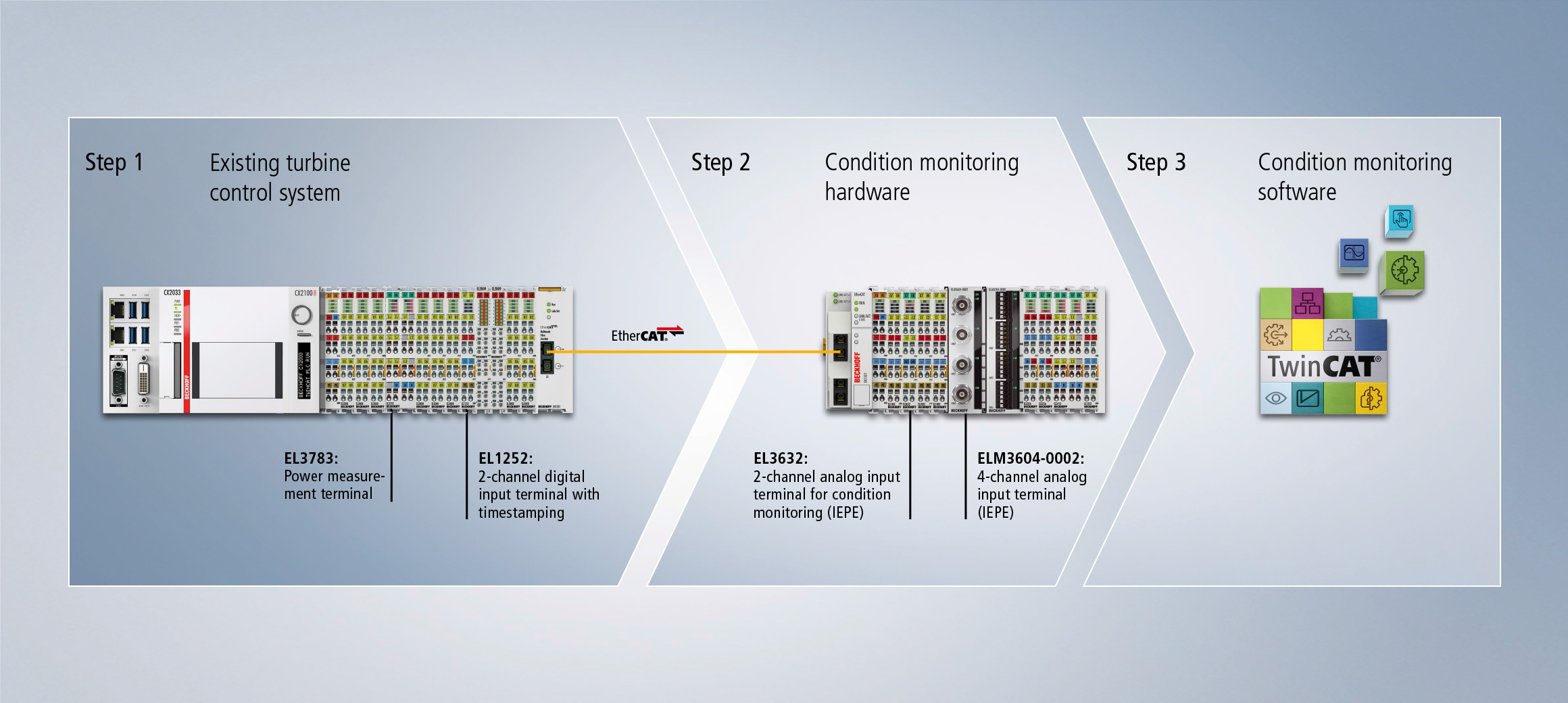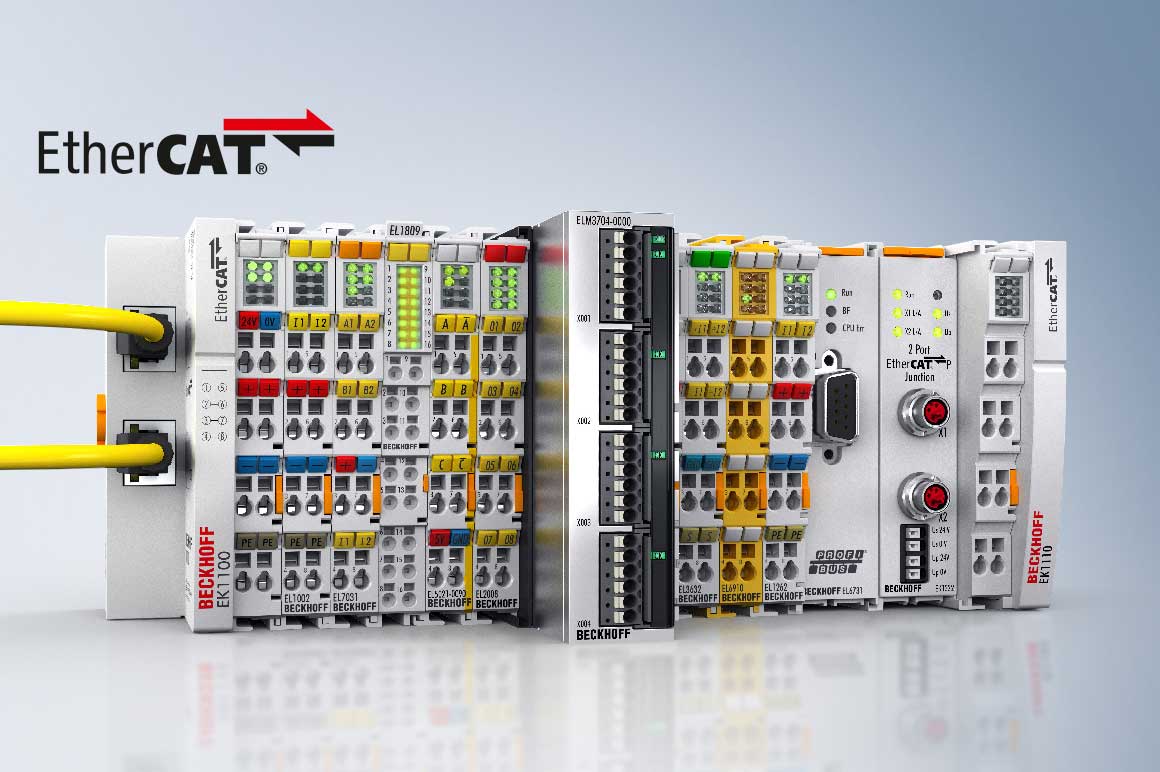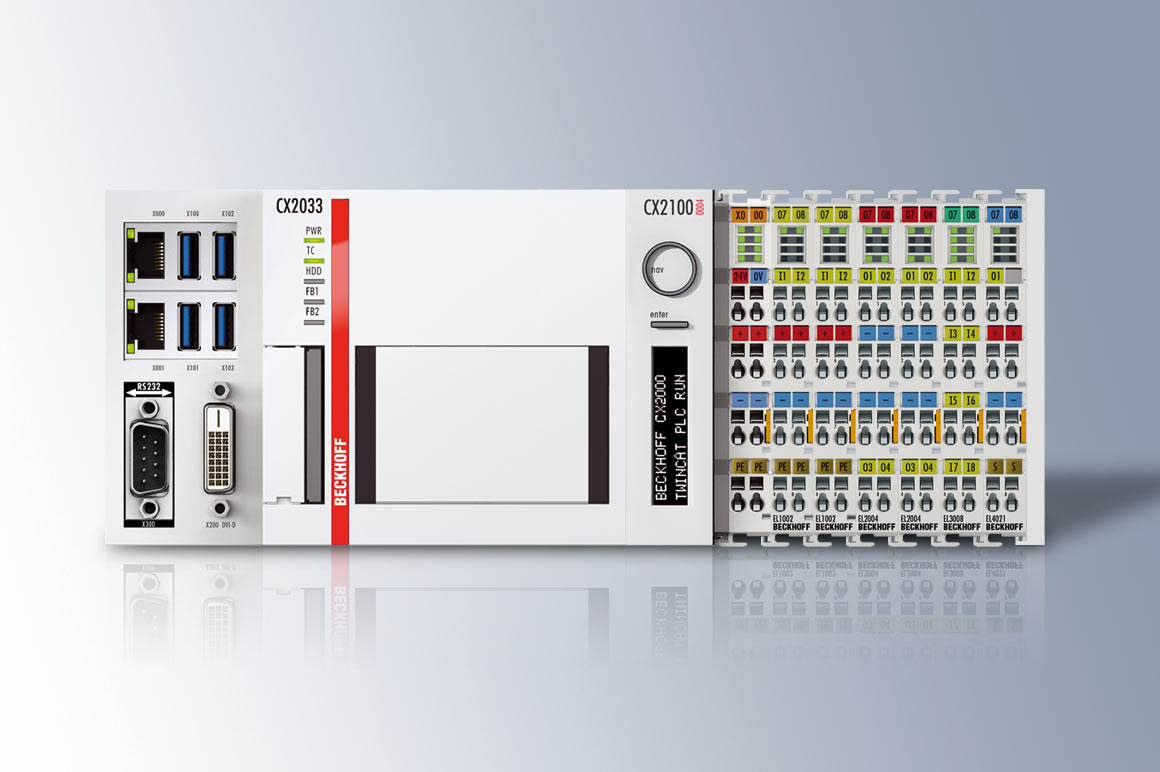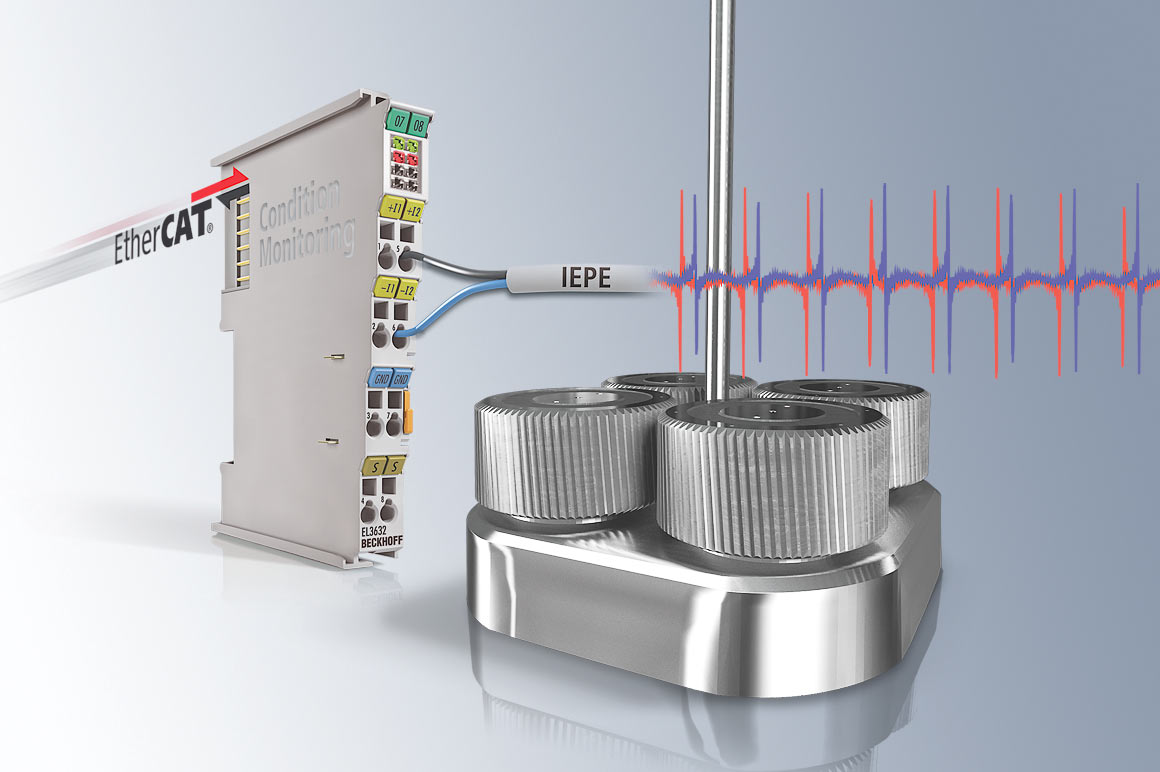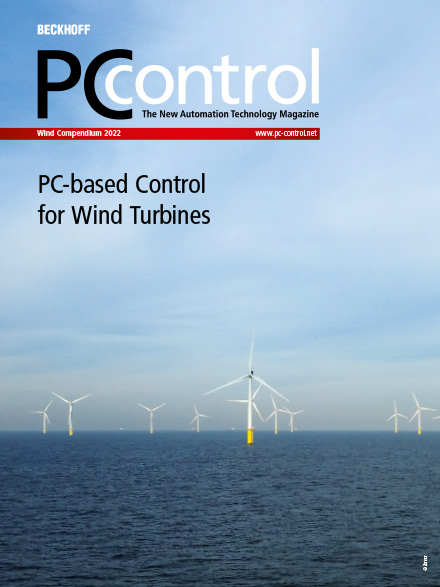

The operation and maintenance of modern wind turbines incurs considerable costs. To maintain competitiveness, failure risks must be minimized, maintenance costs lowered and the availability and energy efficiency of the system increased. This is where condition monitoring enters the game: monitoring of gear units and generators is generally recommended, not just for offshore wind turbines or systems in remote regions.
Beckhoff combines the powerful processors of modern PC technology together with EtherCAT as fast communication system, integrating condition monitoring functionality seamlessly into the controller. The vibrations of bearings or electrical machines are picked up by standard measurement terminals from Beckhoff and transmitted to the controller via EtherCAT. Configuration, programming and diagnostics are carried out within one system using TwinCAT. With improved error detection and holistic system analysis capabilities, the control system-integrated condition monitoring from Beckhoff is superior to conventional hardware-based condition monitoring solutions. Through integration of further signals from operational management, including temperature, pressure and current, among others, false alarms can be prevented and error detection is improved. Integration of condition monitoring into the central PC-based controller is advantageous, in particular where large amounts of data from different devices need to be analyzed or if damage frequencies need to be evaluated in relation to the rotary speed. The controller acquires and processes the signals in the microsecond range.
However, cost reductions with regard to system, installation and maintenance also highlight the merits of system-integrated condition monitoring. Existing systems can be retrofitted simply and inexpensively.
System-integrated condition monitoring offers:
- time-synchronous data logging in << 1 μs
- reliable data analysis
- enhanced diagnostics
- increased system availability
- longer service life of wind turbines
- reduced maintenance costs
- reduced system costs
- enhanced competitiveness
Application reports and brochures
- 02.09.2024 | Application report
Fast control technology reliably compensates for rotor blade movements caused by wind load
Hvide Sande und Seasight Solutions, DenmarkAccording to Danish company Seasight Solutions, the entire industry is talking about a real game changer in the field of wind-turbine installation. This innovative new approach uses human-sized propellers to compensate for wind loads and keep the rotor blades precisely in position in relation to the hub, allowing the huge components to be assembled safely and quickly without hauling ropes – even on stormy days. However, a sophisticated control concept and real-time-capable automation technology are needed to make this possible, which is precisely where PC-based control from Beckhoff comes into play.
- 16.07.2024 | Application report
Transmitting high power efficiently over long distances
MathWorks und Siemens Energy, GermanyWhether from offshore wind turbines on the high seas to the mainland, from wind turbines in northern Germany to industrial sites in the south of the country, or from hydropower plants in Scandinavia to central Europe – high-voltage direct current transmission is used to transmit large amounts of energy over long distances. For its solution, Siemens Energy relies on MATLAB and Simulink from MathWorks and PC-based control from Beckhoff.
- 04.04.2023 | Application report
Precisely controlled stress tests increase availability
IALB, GermanyMajor points of interest to the German energy industry right now include the service life of power electronics in wind turbines along with determining the environmental and load conditions that play a role in this regard. Keen to find answers, scientists at the Institute for Electrical Drives, Power Electronics, and Devices (IALB) at the University of Bremen are working closely with the Fraunhofer Institute for Wind Energy Systems (IWES) to learn more. The data set for this project is determined on an enormous test rig, automated with PC-based control from Beckhoff.
- 02.11.2022 | Application report
Test rig for the next generation of rotor blades
Blaest, DenmarkThe next generation of wind turbines will feature rotor blades measuring 100 m long and counting, up to now making them too big for the existing test rigs at Blaest A/S in Aalborg, Denmark. Along with the construction of a new test hall, the company completely redesigned its control and test equipment: EtherCAT P and a custom measuring amplifier box now replace hundreds of lines and increase accuracy through digitization close to the measurement points. With PC-based control, Blaest is now ready for the future.
- 07.10.2022 | PC Control customer magazine
Wind Compendium 2022
The Wind Compendium 2022, a special edition of our PC Control customer magazine, is a collection of selected application reports about wind power which have been realized with Beckhoff technology. The wide range of applications with varying degrees of complexity will give you an idea of how versatile the solutions are that can be implemented with the open and universal PC- and Ethernet-based control technology from Beckhoff and the benefits it provides.
